
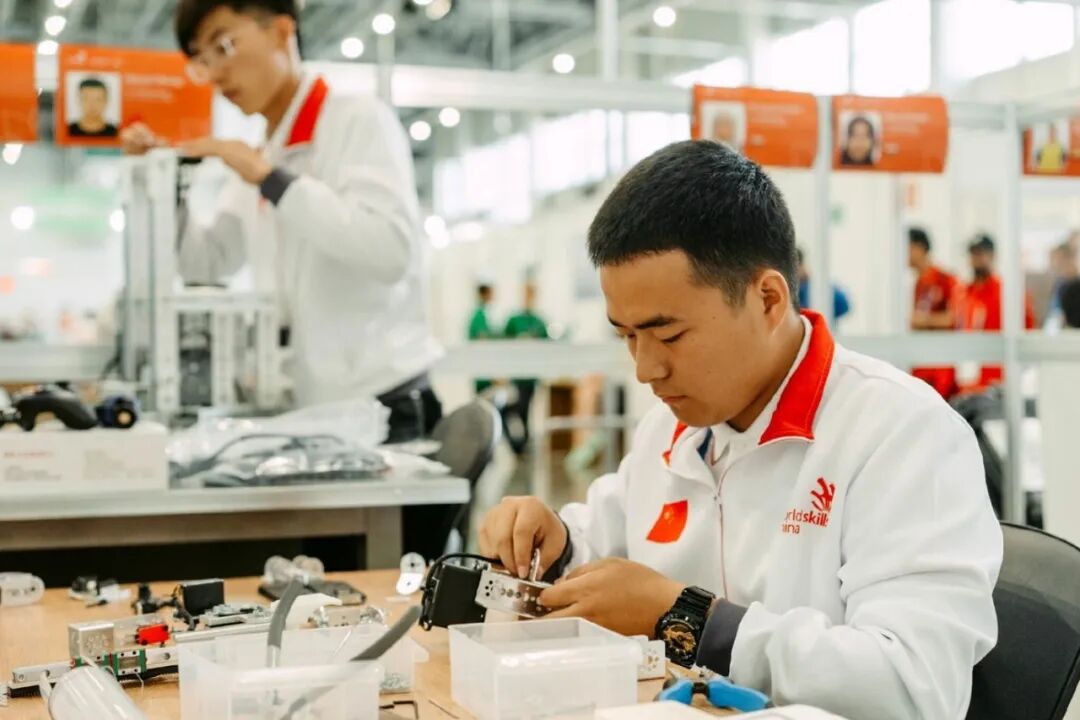
China's demand for robotics skills is growing steadily.
Image source: WorldSkills/Flickr
Ricky Li
Head of Insights and Data at the World Economic Forum
Ian Shine
Senior Writer for the Forum Agenda
- According to the World Economic Forum's "2025"Future of Employment Report for the Coming Year", China has more than 90%Companies believe that artificial intelligence and robotics are key technologies driving business transformation.
- Achieving this transformation will require extensive retraining and upskilling initiatives, as employers anticipate that skill gaps and the challenge of attracting talent will pose significant barriers to corporate transformation amid a shrinking working-age population.
- Emission reduction efforts are reshaping Chinese enterprises, and the potential synergy between climate technology, big data, artificial intelligence, and robotics is also set to create significant job opportunities.
EntireFor every two industrial robots installed, one is put into operation in China.Since2013Since then, China has been the world's leading market for industrial robots.At the same time as this trend emerged, demographic shifts also occurred, particularly among the working-age population.Has declined somewhat.
This seems to be influencing employers' mindsets. According toThe World Economic Forum's "2025"Future of Employment Report for the Coming Year", exceeding90%And65%Employers believe that artificial intelligence and robotics are key technologies driving business transformation. Meanwhile, there are38%Employers view the talent shortage as the primary obstacle to business growth.
Additionally, China ranks above the global average in recognizing the transformative potential of several other technologies, including new materials, semiconductors, biotechnology, and quantum computing.
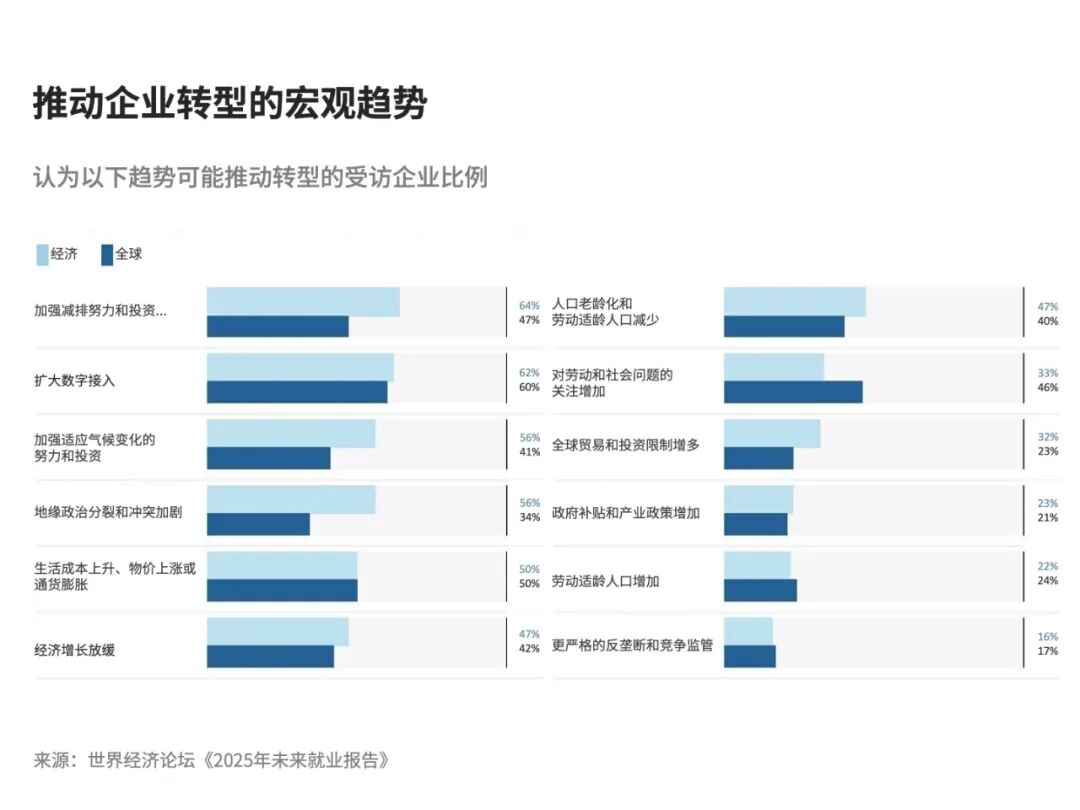
Compared to their global peers, Chinese companies believe that technology trends are more likely to drive business transformation.
Image source: World Economic Forum's "Future of Jobs 2025 Report"
How will employment in China evolve in the future? Future jobs will be technology-driven, with robotics and artificial intelligence leading advancements across a range of sectors—including renewable energy, electric vehicles, semiconductors, and supercomputing. At the same time, large-scale retraining and upskilling initiatives will take center stage, aiming to unlock employees' full potential and equip them with the skills essential for both economic growth and societal needs.
Key Trends in China's Labor Market
Chinese employers' concerns about talent supply aren't much different from the global situation. Globally, there is37%Employers are facing a talent shortage, slightly lower than in China.38%
However, Chinese employers have a distinctly different view on the skills gap. Only50%Chinese employers view the skills gap as a development hurdle, whereas the proportion among global employers is63%
This could be due to the government's efforts to fund retraining and skills enhancement programs.China's“”(2021–2025)“”,“”
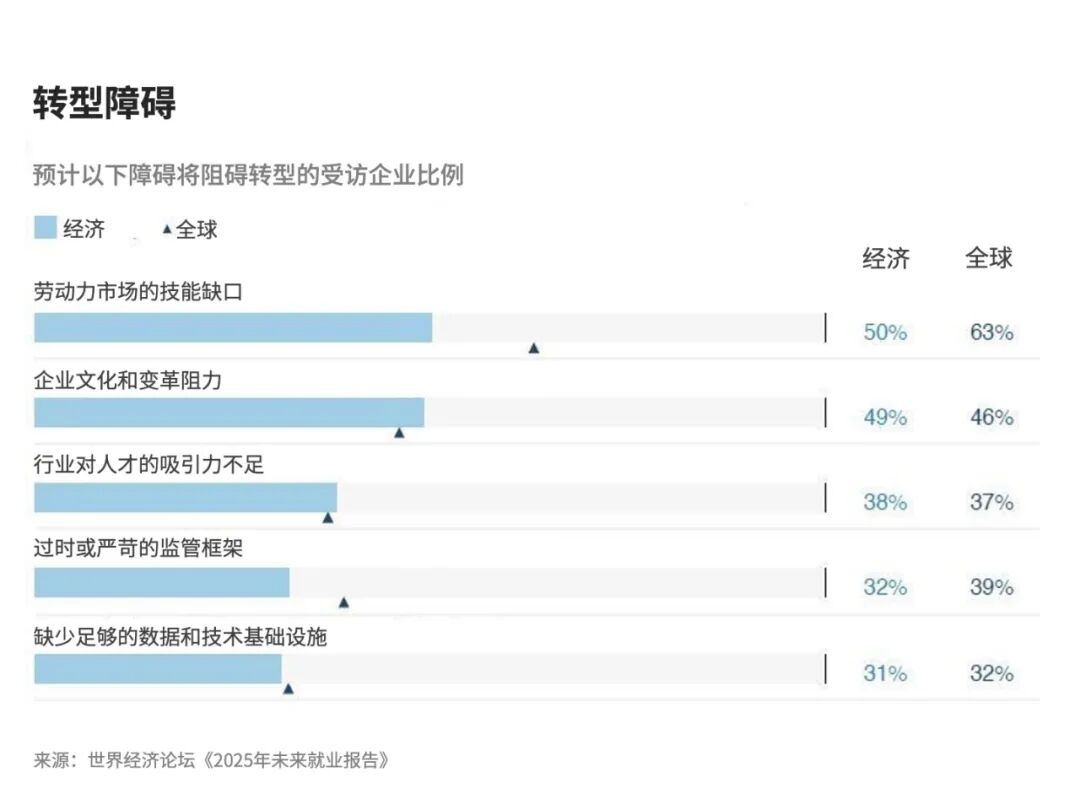
,
:2025
64%And56%,(47%And41%)
,
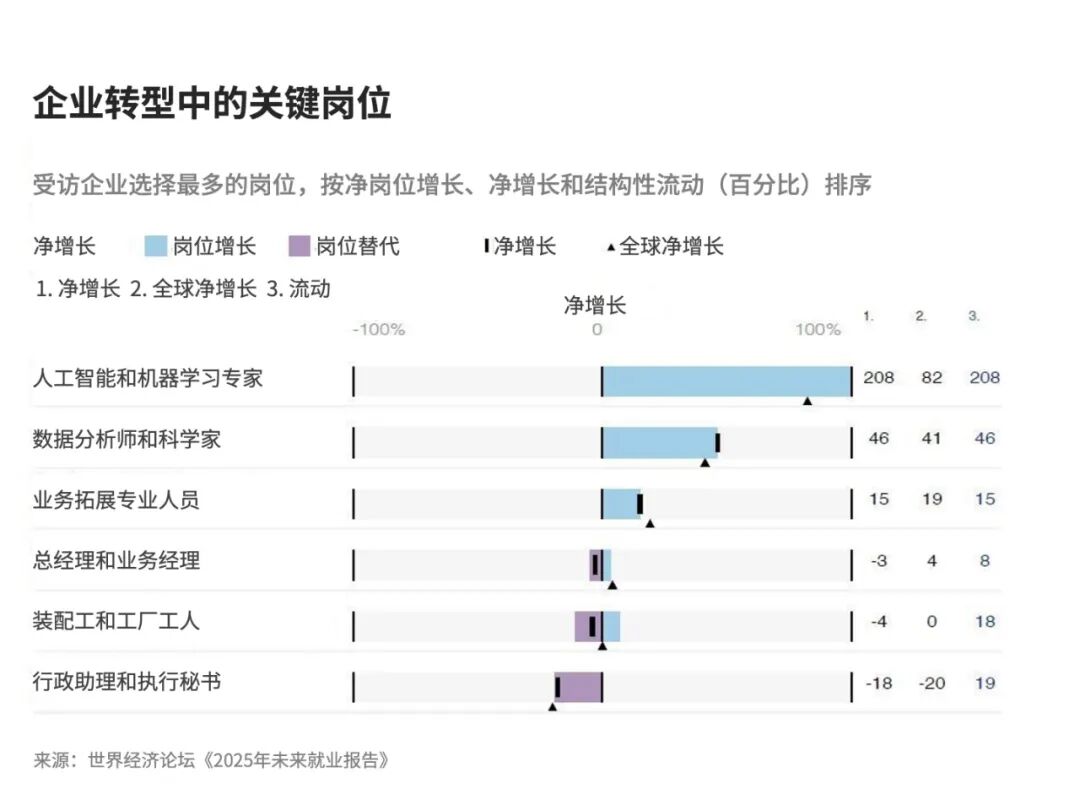
:2025
82%,46%,41%
:
,47%,40%
20242023,,,

,
:2025
,2100,59%36%,,56%,34%
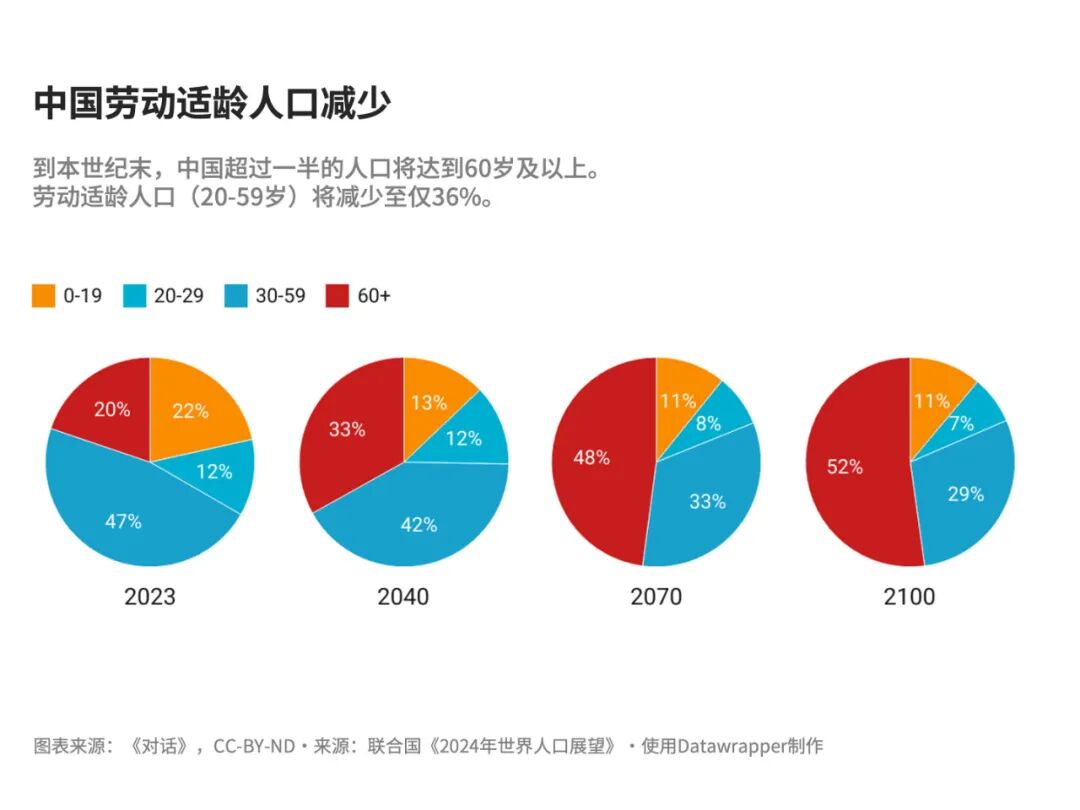
,
://2024
,
,,,
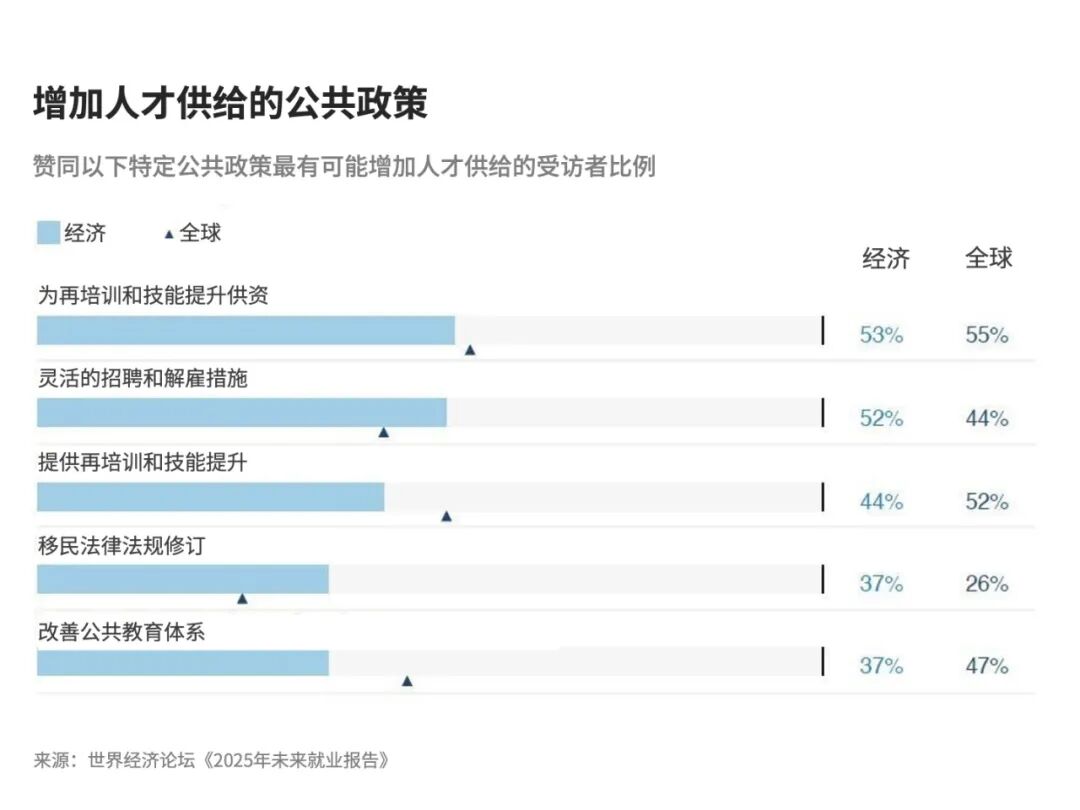
,
:2025
,,202446%
:“,,,,,,,,”
,,,
,,,
“”,,

This article is translated from the World Economic Forum's Agenda blog; the Chinese version is for reference only.Feel free to share this in your WeChat Moments; please leave a comment at the end of the article or on our official account if you’d like to republish.
Translated by: Di Chenjing | Edited by: Wan Ruxin
The World Economic Forum is an independent and neutral platform dedicated to bringing together diverse perspectives to discuss critical global, regional, and industry-specific issues.
Follow us on Weibo, WeChat Video Accounts, Douyin, and Xiaohongshu!
"World Economic Forum"


